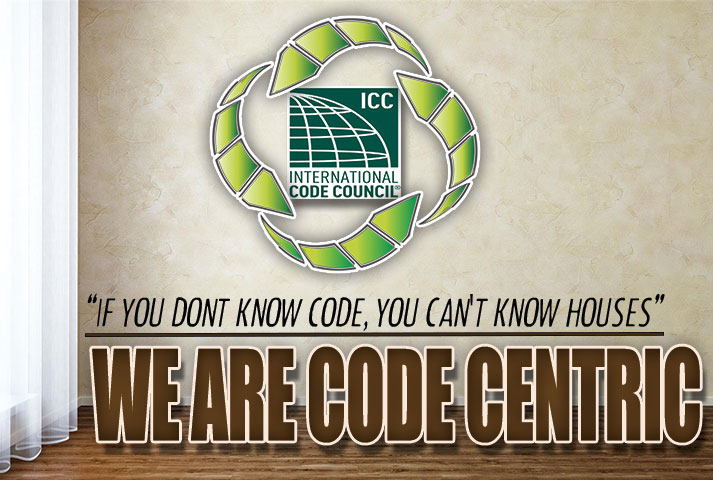To Know Code or not to Know Code…
MIG is building code centric and we will explain why we follow these standards as close as we possibly can. Since we are familiar and experienced with construction, we know that every legal structure is built to a standard and requires permits from the authority having jurisdiction. These standards are in place to protect the occupants of the building and keep them safe. It is therefore obvious that the more you know about building code, the more that you can recognize that something has not been properly built or installed.
There is an ongoing debate within the real estate industry as to whether or a not an inspector should inspect, comment and write reports with such code cited in the report. To support their concerns, most, if not all, home inspection association code of ethics do not require an inspector to inspect for code compliance.
ASHI (American Society of Home Inspectors) Section 13.2.(a)8 General exclusions: A. Inspectors are NOT required to determine: compliance with regulatory requirements (codes, regulations, laws, ordinances, etc.).
CREIA (California Real Estate Inspectors Association) Determining compliance with manufacturers’ installation guidelines or specifications, building codes, accessibility standards, conservation or energy standards, regulations, ordinances, covenants, or other restrictions
MIG is Building Code Centric
It is the opinion of MIG that it is a good idea to have a seasoned home inspector who has a vast knowledge in the building trades and who is very familiar with many of the building codes and the processes of construction perform building inspections. If the inspector can recognize a current building code that has not been followed properly or is out of date due to the construction of the home, it can help make the buyer or client aware of some type of hazard or additional expense for repair as a result.
Utilizing building code helps to identify and help illustrate how an item should have been installed. For example, 2012 R303.7 Stairway illumination. All interior and exterior stairways shall be provided with a means to illuminate the stairs, including the landings and treads. As you can see, with “shall be” there is not much wiggle room or vagueness there…
Old Code Verses New Code
Now there is a topic that must be addressed in my opinion and it’s this: Which code is correct, current code or past code? In our opinion, use all code. When inspecting a building you must be familiar with the code in which the building was constructed and understand that nothing, with the exception of a few items (during a real estate transaction) will be retrofitted to meet current building code. If you (the inspector) cannot comprehend this fact, you will look like a fool for making issues out of things which would not otherwise be considered significant.
The building code for stair balusters at one time stated that they were okay when spaced wider than 4″, but over time this changed to what is currently the 4″ standard. The code changed in large part due to injury, death and prevention. So a practical inspector concerned for the safety of their client, will utilize old code to understand that this condition predates new code but will also inform the client that it “would be prudent to improve this for children’s sake”. Current code is a helpful tool to illustrate how items of older building code are sometimes proven be ineffective in protection and for the sake of prudence, be “improved or retrofitted” for the safety of the occupants.
Share this Post

